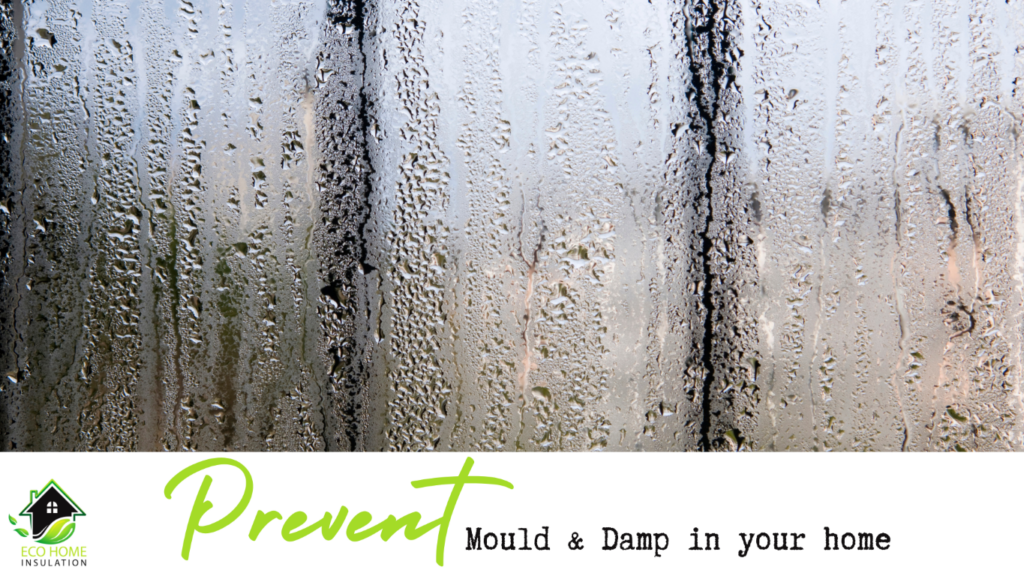Discovering mould growth within your home isn’t nice – especially when you’re unsure of the cause.
Mould can cause various issues within the home including damage to window frames, walls & ceilings, clothes, furniture and increases to your energy bills. In this blog we are going to discuss the most common causes for mould and damp within your home, plus share our top tips on how to prevent these issues from reoccurring.
Proper ventilation within any home is key to a dry and mould free atmosphere, so make sure you follow these necessary steps to allow air to circulate within your home and stop mould and damp in its tracks.
Did you know? – A damp home will typically take twice as long to heat due to the air being much heavier – meaning, you can expect to see significant rises with your energy bills.
Living with mould can also seriously affect your health. According to the NHS “if you have damp or mould within your home, you’re more likely to have respiratory problems, respiratory infections, allergies or asthma”.
Usually, we see mould and damp in homes when there is excess moisture in the air, which can occur due to a variety of issues including:
- Condensation (water vapour that condenses on various surfaces within your home)
- Poor insulation & heating (old insulation, movement in insulation, lack of insulation, poor/ inefficient heating system etc.)
- Poor Ventilation (prevents moisture in the air escaping from your home, causing a damp atmosphere – ideal for mould growth)
Knowing the signs…
Mould is usually caused by a damp atmosphere (condensation) and is typically identified by black spots which can be found on any walls within your property. Mould growth can often be a side effect of poor ventilation in your home and can often be wiped away.
However, this is only a ‘quick fix’ as this doesn’t remove the spores deep within the walls and will undoubtably grow back.
Common places to see mould growth are:
- Along ceiling lines
- Corners of ceilings
- Up the stairs
- Around window and door frames
Identifying the causes…
If you have spotted mould growth within your home, there are several things you can do to eliminate the problem. After tackling the initial problem with a mould removal solution (found in most supermarkets or DIY stores), to prevent further mould growth make sure you:
- Open the trickle vents on your windows – these can be found on most windows, usually at the top of the window frame. Opening these vents will allow moisture in the air to escape and will create a dryer atmosphere, preventing the growth of mould.
- If you normally dry your clothes on radiators within your home, make sure you open a window whilst drying to avoid moisture building up in the atmosphere. Or try drying your clothes on a clothes horse next to open windows to prevent a heavily damp atmosphere. Understandably during winter months, it becomes harder to dry clothes with windows open due to colder temperatures however, by opening trickle vents and setting your heating to a lower temperature you can still reduce the amount of water in the air within your home whilst effectively drying your washing.
- When you are cooking, ensure that the room is well ventilated – open window or turn on the extractor fans.
- Again, when taking a shower or bath make sure the room is well ventilated – opening windows or using extractor fans.
Still seeing mould growth?
Still seeing the re-appearance of mould? Some causes may be:
- Poor loft insulation
- Poor wall insulation
- Poor ventilation
- Insufficient heating
If you have a loft space it is crucial to make sure that it is well ventilated too. This can be achieved by installing vents or roof lights which allow hot air to escape through the loft and fresh air to circulate, avoiding an overly damp atmosphere.
If you would like to improve the ventilation of your home further and avoid having to open windows or install vents manually, then it may be worth investing in a whole house mechanical ventilation system. When exploring your options, you will need to consider installing either positive input ventilation (PIV) systems or mechanical extract ventilation (MEV) systems.
PIV systems involve installing one large fan into your loft that will work to draw fresh air into your home and distribute it throughout your home.
MEV systems involve several fans in various rooms throughout your home to draw damp air out of the rooms in your home. It is also worth noting that some MEV systems have both input and extract fans, which can further help to keep your home further ventilated. There are two types of MEV systems: intermittent and continuous. Intermittent works on a timer bases for 20-30mins every hour and continuous works without stopping throughout the day constantly expelling stale air and drawing in fresh air to your home.
The type of ventilation system you choose to install within your home will depend on your home’s layout, the age of the property and your budget. Intermittent MEV is better suited to smaller homes with only one or two rooms that need ventilation and continuous MEV works better in larger homes with multiple rooms requiring ventilation (such as bathrooms and kitchens).
Finding a professional to help with damp, mould and ventilation issues
If you are looking to improve the ventilation in your home, have new PIV or MEV systems installed or if you are simply still seeing mould growth within your homes, get in touch with us today to see how we can help.
At Eco Home Insulation we can help to identify and solve mould and damp problems for FREE due to Energy Companies Obligation funding – a government backed scheme (ECO Scheme). Or if you do not qualify for the ECO scheme, we are more than happy to assist you in resolving these issues for a competitive installation fee.
Eco Home Insulation are fully qualified to PAS 2030 standards and gas safe registered, promising not only a high standard of work across all measures, but also compliance with British building standards.
Working under [the Government backed] Energy Companies Obligation (ECO) scheme, Eco Home Insulation aims to provide homeowners, landlords and tenants with FREE insulation & heating measures. We promote measures which help low income, vulnerable and fuel poor households across Britain. For more information on the ECO scheme visit https://www.ofgem.gov.uk/environmental-and-social-schemes/energy-company-obligation-eco
For information on how we can help, contact us on:
Tel: 0333 444 1062
Email: info@ecohomeinsulation.co.uk
Web: www.ecohomeinsulation.co.uk

